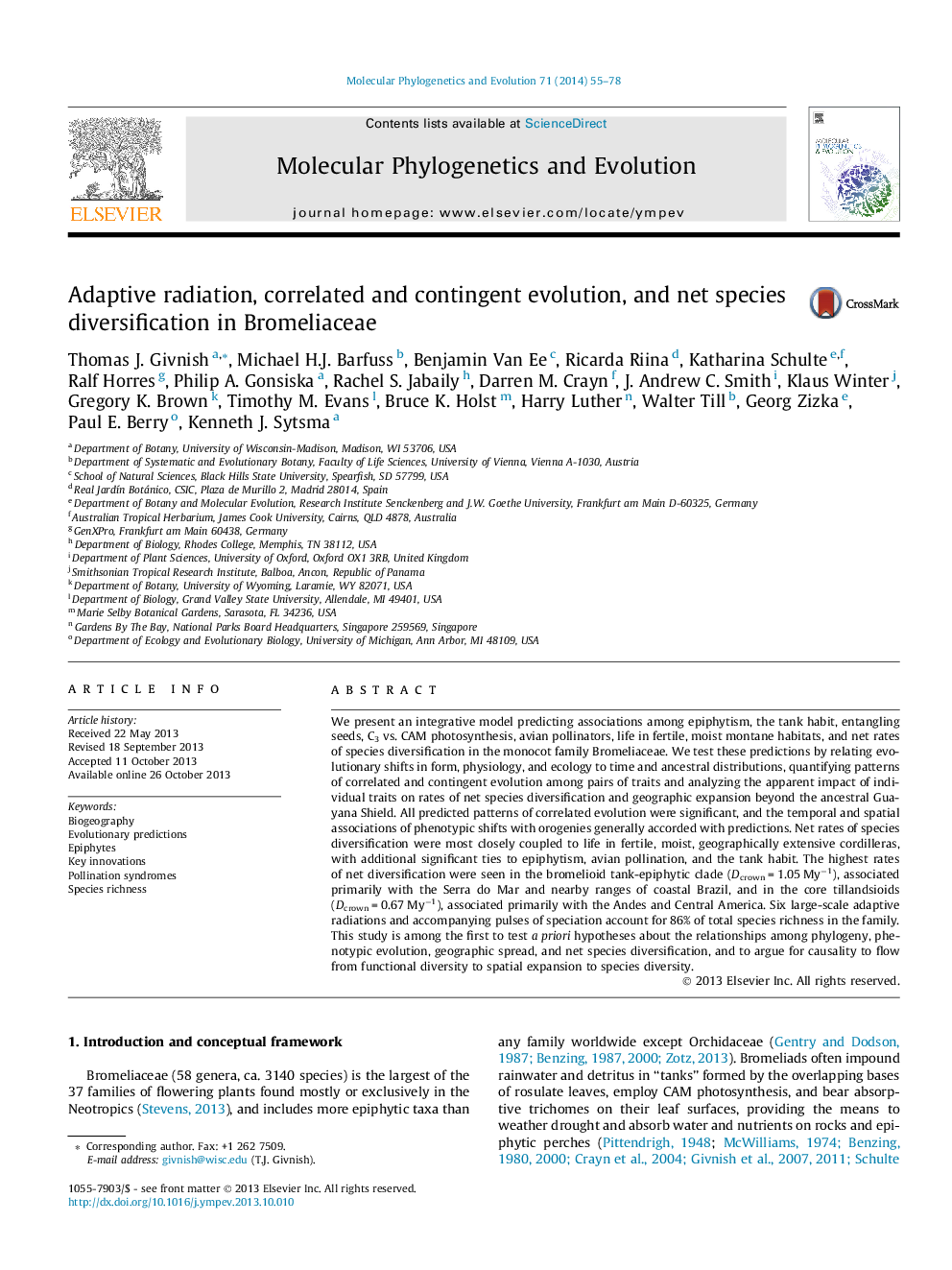| کد مقاله | کد نشریه | سال انتشار | مقاله انگلیسی | نسخه تمام متن |
|---|---|---|---|---|
| 5919590 | 1570824 | 2014 | 24 صفحه PDF | دانلود رایگان |

- We trace 97 million years of bromeliad adaptation, biogeography, and species diversification.
- We use these data to test an integrative model for bromeliad evolution.
- Patterns of correlated and contingent evolution are consistent with this model.
- Diversification rates are significantly higher in epiphytic, tank-forming, bird-pollinated, and montane lineages.
- 86% Of bromeliad species richness reflects six major adaptive radiations in different areas.
We present an integrative model predicting associations among epiphytism, the tank habit, entangling seeds, C3 vs. CAM photosynthesis, avian pollinators, life in fertile, moist montane habitats, and net rates of species diversification in the monocot family Bromeliaceae. We test these predictions by relating evolutionary shifts in form, physiology, and ecology to time and ancestral distributions, quantifying patterns of correlated and contingent evolution among pairs of traits and analyzing the apparent impact of individual traits on rates of net species diversification and geographic expansion beyond the ancestral Guayana Shield. All predicted patterns of correlated evolution were significant, and the temporal and spatial associations of phenotypic shifts with orogenies generally accorded with predictions. Net rates of species diversification were most closely coupled to life in fertile, moist, geographically extensive cordilleras, with additional significant ties to epiphytism, avian pollination, and the tank habit. The highest rates of net diversification were seen in the bromelioid tank-epiphytic clade (Dcrown = 1.05 Myâ1), associated primarily with the Serra do Mar and nearby ranges of coastal Brazil, and in the core tillandsioids (Dcrown = 0.67 Myâ1), associated primarily with the Andes and Central America. Six large-scale adaptive radiations and accompanying pulses of speciation account for 86% of total species richness in the family. This study is among the first to test a priori hypotheses about the relationships among phylogeny, phenotypic evolution, geographic spread, and net species diversification, and to argue for causality to flow from functional diversity to spatial expansion to species diversity.
Journal: Molecular Phylogenetics and Evolution - Volume 71, February 2014, Pages 55-78